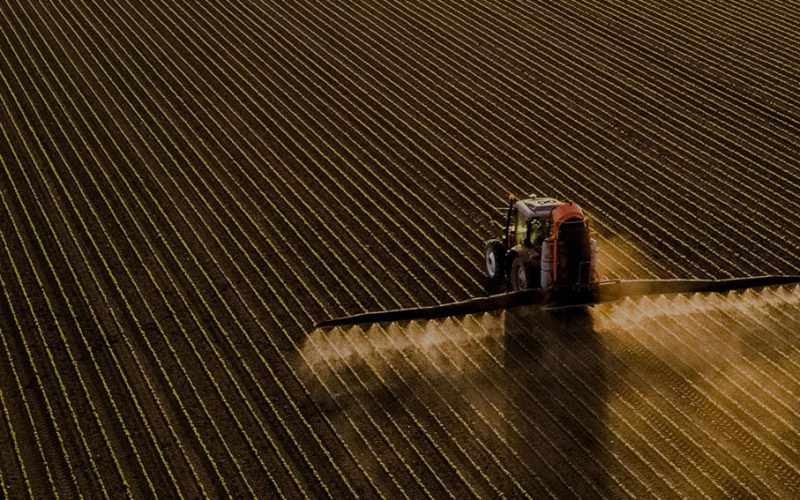by John Kratochwil, MBA, P.Eng. Equity Analyst, Mining and Materials AGF Investments Inc.
Supply chain issues for everything from commodities to consumer goo,ds have become a fact of life in the pandemic era, and the conflict in Ukraine has put further stress on an already-strained global system. Much of the market’s focus has been on soaring energy prices, as Russia, which accounts for about 10% of global petroleum production, has been cut off from export markets. The shortage has translated into elevated cash flows for Western oil-and-gas companies and healthy returns for their shareholders. Yet as the conflict continues, investors are increasingly considering the impact of another global supply crunch – in food – and the potential opportunities in agriculture-related materials such as fertilizer and crop-protection products (aka pesticides).
Before late February, when Russia’s invasion of Ukraine forced the closure of major ports and turned Russia into an economic pariah, the two countries had been breadbaskets – significant exporters of wheat and other foodstuffs that each supplied about 6% of the world’s calories, according to the Agriculture Market Information System. In fact, Russia is the world’s largest exporter of wheat, with Ukraine being in fifth place, the UN Food and Agriculture Organization reports.
Many farmers in Ukraine have taken up arms against Russia, and those who have remained to work on their lands are having trouble sourcing labour. It is estimated that Ukraine will harvest less than half of the 80 million tonnes of grain (wheat, corn, barley) it produced in 2021,, according to the Foreign Agricultural Service of the United States Department of Agriculture. Some regions are more affected than others by the resulting shortages, especially food-import-dependent countries in South Asia, the Middle East and Sub-Saharan Africa. Egypt, for instance, is the world’s largest importer of Ukrainian wheat; Lebanon and Pakistan are similarly dependent, with the latter getting half its grain from Ukraine, according to the UN World Food Programme.
The result of all this? As of May 5, 2022, the World Bank Agricultural Price Index is up 41% compared to January 2021, while wheat prices are 60% higher. In the World Bank’s April 2022 Commodity Markets Outlook, it suggests the conflict in Ukraine has changed food trade patterns, production and consumption in ways that will keep prices at historically high levels until the end of 2024.
Importantly, rising fertilizer costs have contributed to even further food price inflation, and they are also related to the war in Ukraine. According to Morgan Stanley, Russia and Belarus had provided approximately 40% of the world’s exports of potash, a key component in many fertilizers. Belarus’s potash was already under sanctions prior to the conflict in Ukraine, and now Russia’s is locked out of many markets, too. On top of that, Russia and Ukraine together export 28% of fertilizers made from nitrogen and phosphorous. While fertilizer from Ukraine is not under sanctions, transportation routes have been disrupted and much of this material is not making it out of the country. In May, spot prices for potash had climbed more than 175% from the previous year, according to Y Charts, an investment research platform, while Bloomberg data shows ammonia (another key fertilizer component) remained nearly 90% higher despite some recent price moderation.
In response, why can’t the rest of the world just produce more food? It is not that simple. While crops are grown all over the globe, the fertile soil conditions of Russia and Ukraine are not easily replicated. Weather patterns in 2022 are also not helping. Brazil, for example, is a large producer of corn, but drier than normal conditions are increasing the potential for yet another year of diminished harvest in June and July; it is estimated that about 30-40% of Brazil’s current corn crop is currently under some level of moisture stress. In the United States, meanwhile, the National Weather Service is forecasting above-normal temperatures and below-normal precipitation across major wheat-producing areas like Colorado, Texas, Oklahoma and western Kansas through July.
With all of these issues surrounding the supply of key grains, food security is under threat. Since the conflict in Ukraine started in February, 23 countries (as of late April) have imposed export restrictions on food; representing about 17% of total calories traded in the world, according to AMIS Market Monitor. Many had looked to India – a major exporter of wheat as recently as last year – to help offset the supply loss from Ukraine, but on May 13 the country prohibited all wheat exports, Bloomberg reported.
These realities suggest that food price inflation will continue for some time, and food supply may become increasingly scarce. It stands to reason that farmers will work hard to plant as much crop as they can to take advantage of high market prices; to improve yields, they will likely use as much fertilizer and crop-protection products as economically viable. The supply of farm chemicals, including pesticides, had already been adversely impacted by the pandemic and rising energy costs, and before the Ukraine conflict farmers were facing elevated prices; in the current environment, we would expect rising demand and continuing supply issues to maintain inflation at least through the 2022 growing season and perhaps beyond.
Even when the conflict in Ukraine ends, it seems unlikely that Western sanctions against Russia will be immediately lifted. As well, transportation routes from Ukraine will take time to be re-established. Those probabilities suggest that as food and fertilizer can only slowly return from Ukraine and Russia to world markets, we can expect elevated pricing for the medium-to-long term. In our view, then, fertilizer production and crop-protection companies may continue to benefit from elevated cash flows in the current environment. So might their investors.
Click to learn more about our fundamental capabilities.
The views expressed in this blog are those of the author(s) and do not necessarily represent the opinions of AGF, its subsidiaries or any of its affiliated companies, funds, or investment strategies.
The commentaries contained herein are provided as a general source of information based on information available as of June 10, 2022 and are not intended to be comprehensive investment advice applicable to the circumstances of the individual. Every effort has been made to ensure accuracy in these commentaries at the time of publication, however, accuracy cannot be guaranteed. Market conditions may change and AGF Investments accepts no responsibility for individual investment decisions arising from the use or reliance on the information contained here.
“Bloomberg®” is a service mark of Bloomberg Finance L.P. and its affiliates, including Bloomberg Index Services Limited (“BISL”) (collectively, “Bloomberg”) and has been licensed for use for certain purposes by AGF Management Limited and its subsidiaries. Bloomberg is not affiliated with AGF Management Limited or its subsidiaries, and Bloomberg does not approve, endorse, review or recommend any products of AGF Management Limited or its subsidiaries. Bloomberg does not guarantee the timeliness, accurateness, or completeness, of any data or information relating to any products of AGF Management Limited or its subsidiaries.
AGF Investments is a group of wholly owned subsidiaries of AGF Management Limited, a Canadian reporting issuer. The subsidiaries included in AGF Investments are AGF Investments Inc. (AGFI), AGF Investments America Inc. (AGFA), AGF Investments LLC (AGFUS) and AGF International Advisors Company Limited (AGFIA). AGFA and AGFUS are registered advisors in the U.S. AGFI is registered as a portfolio manager across Canadian securities commissions. AGFIA is regulated by the Central Bank of Ireland and registered with the Australian Securities & Investments Commission. The subsidiaries that form AGF Investments manage a variety of mandates comprised of equity, fixed income and balanced assets.
® The “AGF” logo is a registered trademark of AGF Management Limited and used under licence.















